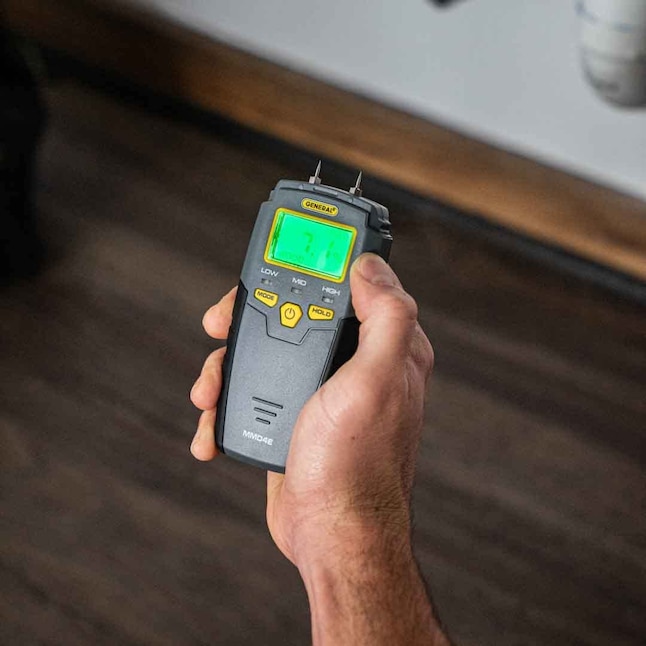Comprehending the Different Kinds Of Moisture Meters and Their Applications
Comprehending the Different Kinds Of Moisture Meters and Their Applications
Blog Article
Look Into the Globe of Moisture Meters: Whatever You Required to Know
In the realm of moisture meters exists a world of accuracy and practicality that often goes unnoticed. These tools, while apparently uncomplicated, hold a riches of info that can substantially impact various markets and applications. Understanding exactly how moisture meters run, the various types offered, and their diverse usages can lose light on their value in guaranteeing high quality and effectiveness. By exploring the complexities of wetness meters, one can discover an important tool that transcends simple dimension, supplying understandings that can make a substantial difference in many areas.
Exactly How Moisture Meters Work
Moisture meters operate by determining the electrical conductivity or capacitance of materials to identify the moisture content existing. These meters are very useful devices throughout various markets, including woodworking, agriculture, and building and construction. By making use of different methods such as pin-type or pinless modern technology, dampness meters supply precise readings that help experts make informed choices.
Pin-type wetness meters work by putting the sharp pins right into the material being tested. On the other hand, pinless moisture meters utilize electro-magnetic signals to check a bigger area without creating any kind of damage to the product's surface.
No matter of the technique made use of, moisture meters play a crucial duty in stopping concerns such as mold and mildew development, structural damage, or item problems triggered by excess wetness. Understanding just how these meters job is crucial for making sure the top quality and honesty of materials in numerous applications.
Types of Moisture Meters
Offered the vital duty dampness meters play in various industries, it is important to recognize the various types readily available to professionals for accurately assessing wetness degrees - Moisture Meter. There are mostly 2 primary types of moisture meters: pinless and pin-type dampness meters

On the various other hand, pinless moisture meters use electro-magnetic sensing unit plates to check a bigger area of the product without creating any damage. This kind is suitable for rapidly scanning huge locations and is commonly utilized for flooring, walls, and ceilings. Pinless meters are hassle-free for taking analyses on completed surfaces without leaving any visible marks.
Both sorts of wetness meters have their benefits and are chosen based on the particular needs of the work at hand. Comprehending the distinctions in between these types is critical for professionals to make precise dampness assessments.
Applications Across Industries
Building professionals count on moisture meters to examine the moisture degrees in building materials like drywall, concrete, and timber, which is important for maintaining structural honesty and avoiding concerns like rot or mold. The flooring sector makes use of wetness meters to gauge the wetness web content in subfloors before setting up numerous floor coverings, protecting against costly damages due to excess dampness. In the food sector, moisture meters are utilized to check and control moisture levels in items such as grains, nuts, and dried out fruits to keep freshness and high quality.
Tips for Making Use Of Moisture Meters
Use the wetness meter's calibration setups to ensure accurate readings when determining the dampness web content in various materials. Calibration next is crucial for the proper functioning of a moisture meter. Before each use, it is a good idea to inspect and change the calibration setups according to the details product being examined. In addition, make certain the meter is established to the correct moisture range for the product you are gauging to get one of the most specific outcomes.
When utilizing a pin-type moisture meter, put the pins to the ideal deepness suggested for the material being tested. This makes certain that the dampness readings are taken from the correct deepness within the material, providing a YOURURL.com more exact representation of its moisture web content. For pinless wetness meters, keep in mind to maintain correct contact with the product's surface area to get reliable analyses.
Routinely examine and replace the batteries in your dampness meter to avoid inaccurate readings as a result of reduced power. Store the meter in a completely dry and safe location when not in usage to extend its life-span and maintain its precision. By adhering to these tips, you can make best use of the performance of your wetness meter and get precise wetness web content measurements across different products.
Upkeep and Calibration
To guarantee the accuracy of moisture content measurements, normal upkeep and calibration of the dampness meter are crucial actions in its correct performance. Calibration changes the wetness meter to guarantee that it provides reliable and consistent outcomes.
Calibration needs to be done regularly, particularly if the moisture meter is made use of regularly or in important applications where exact measurements are required. Several wetness meters come with calibration devices or can be adjusted by expert services. Moisture Meter. It is advised to keep a log of calibration dates and results to track the efficiency of the wetness meter over time. By keeping and adjusting the moisture meter regularly, individuals can trust the precision of the wetness content dimensions obtained.
Conclusion

Finally, wetness meters play a critical role in different sectors by properly measuring the moisture material of products. Recognizing how these devices work, the various kinds readily available, and proper maintenance and calibration are vital for websites acquiring trusted results. Whether in construction, agriculture, or manufacturing, making use of dampness meters aids make certain top quality control and performance in procedures.

In conclusion, moisture meters play a crucial duty in numerous markets by accurately measuring the dampness material of materials.
Report this page